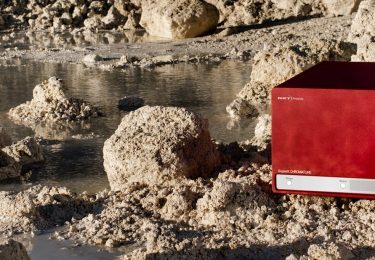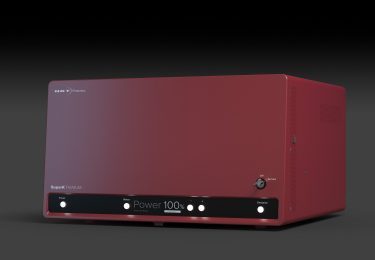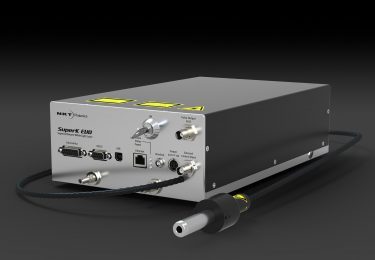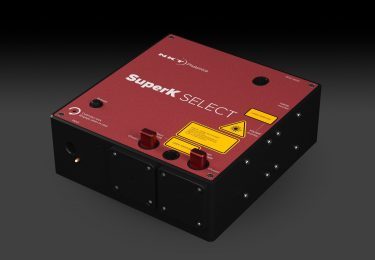Calibration makes sensors intelligent
The market for optical sensors is growing as we tend to put them into more of our everyday necessities and gadgets. But for optical sensors to work properly, they need – like any other measurement instrument – to be calibrated.
Calibration and clever processing add value to inexpensive sensors and transform them into power meters, chemical sensors, ambient light sensors, etc. The calibration process adds value to the sensor by defining it relative to other sensors.
Almost any calibration process consists of submitting a sensor to well-defined and traceable stimuli and recording the response. In most cases, many different stimuli must be recorded to get the full picture.
Most light sources have limitations
Color-sensitive optical sensors must be calibrated for a range of wavelengths. If a high spectral resolution or a high spatial resolution is needed, only a few sources are suitable. And if both are needed, even fewer sources can be used.
Laser arrays and LED arrays offer relatively high powers and especially lasers exhibit high brightness. But they lack spectral flexibility and continuous spectral coverage.
Incandescent lamps and most gas discharge lamps offer a broad and continuous spectral coverage but with poor brightness. The lack of brightness can be a challenge in applications where high spatial resolution is required for instance if there is a need to transmit the light far in free space with low loss to the device under test (e.g. inside a vacuum chamber). Furthermore, if filtering equipment requires a high spectral resolution, high brightness is an advantage.
Why is that? Many narrowband tunable optical filters and monochromators require a relatively high brightness input to work efficiently. An example could be a monochromator where high spectral resolution requires a small input slit, which causes a significant power loss for low brightness sources.
Bright and broad continuous light
Supercontinuum sources can overcome the above challenges because they have high brightness and a broad continuous spectral coverage.
With the right filters, supercontinuum sources can be configured to freely generate tunable narrowband lines or fully adjustable broadband spectral synthesis.
With a SuperK supercontinuum source, you can cover any single color, any complex spectra in any shape.
This allows calibration instrument manufacturers to make rapidly tunable sources to map out the performance of the device under test as well as generate broadband standard illuminants for control purposes. These are features that make the supercontinuum source ideal for the calibration of optical components.
We offer customized and turnkey supercontinuum calibration solutions. All include fully integrated sources, filters, software, and delivery optics. They are based on a field-proven instrument architecture, industrial and scalable production, and backed by a worldwide support network.
Publications
- Hyperspectral reflectance measurements from UAS under intermittent clouds: Correcting irradiance measurements for sensor tilt by Christian J. Köppl, Radu Malureanu, Carsten Dam-Hansen, Sheng Wang, Hongxiao Jin, Stefano Barchiesi, Juan M. Serrano Sandí, Rafael Muñoz-Carpena, Mark Johnson, Ana M. Durán-Quesada, Peter Bauer-Gottwein, Ursula S. McKnight, Monica Garcia published in Remote Sensing of Environment, 2021.
- Characterization of Nancy Grace Roman Space Telescope slitless spectrometer (grism) by Qian Gong, Matthew Bergkoetter, Joshua Berrier, Victor J. Chambers, Margaret Dominguez, Wesley Fincher, John Hagopian, Catherine Marx, Laurie Seide published in Journal of Astronomical Telescopes, Instruments, and Systems, 2020.
- A Broadband Mid-Infrared Trace Gas Sensor Using Supercontinuum Light Source: Applications for Real-Time Quality Control for Fruit Storage by Khalil Eslami Jahromi, Qing Pan, Amir Khodabakhsh, Cor Sikkens, Paul Assman, Simona M. Cristescu, Peter M. Moselund, Maxime Janssens, Bert E. Verlinden, Frans J. M. Harren published in European Conference on Biomedical Optics proceedings, 2019.
- WFIRST Grism Characterization by Qian Gong, Matthew Bergkoetter, Joshua Berrier, John Chambers, Margaret Dominguez, Wesley Fincher, John Hagopian, Cathy Marx published on NASA Technical Reports Server, 2019.
- Flavinium Catalysed Photooxidation: Detection and Characterization of Elusive Peroxyflavinium Intermediates by Jan Zelenka, Prof. Dr. Radek Cibulka, Prof. Dr. Jana Roithová published in Angewandte Chemie, 2019.
References
- Spectrally resolved radiometric characterization and calibration using a supercontinuum laser in the NIR by L. Bünger, R.D. Taubert, and K. Anhalt for the AMA Conferences – Sensor 2015 and IRS2 2015, DOI 10.5162/irs2015/1.2.









